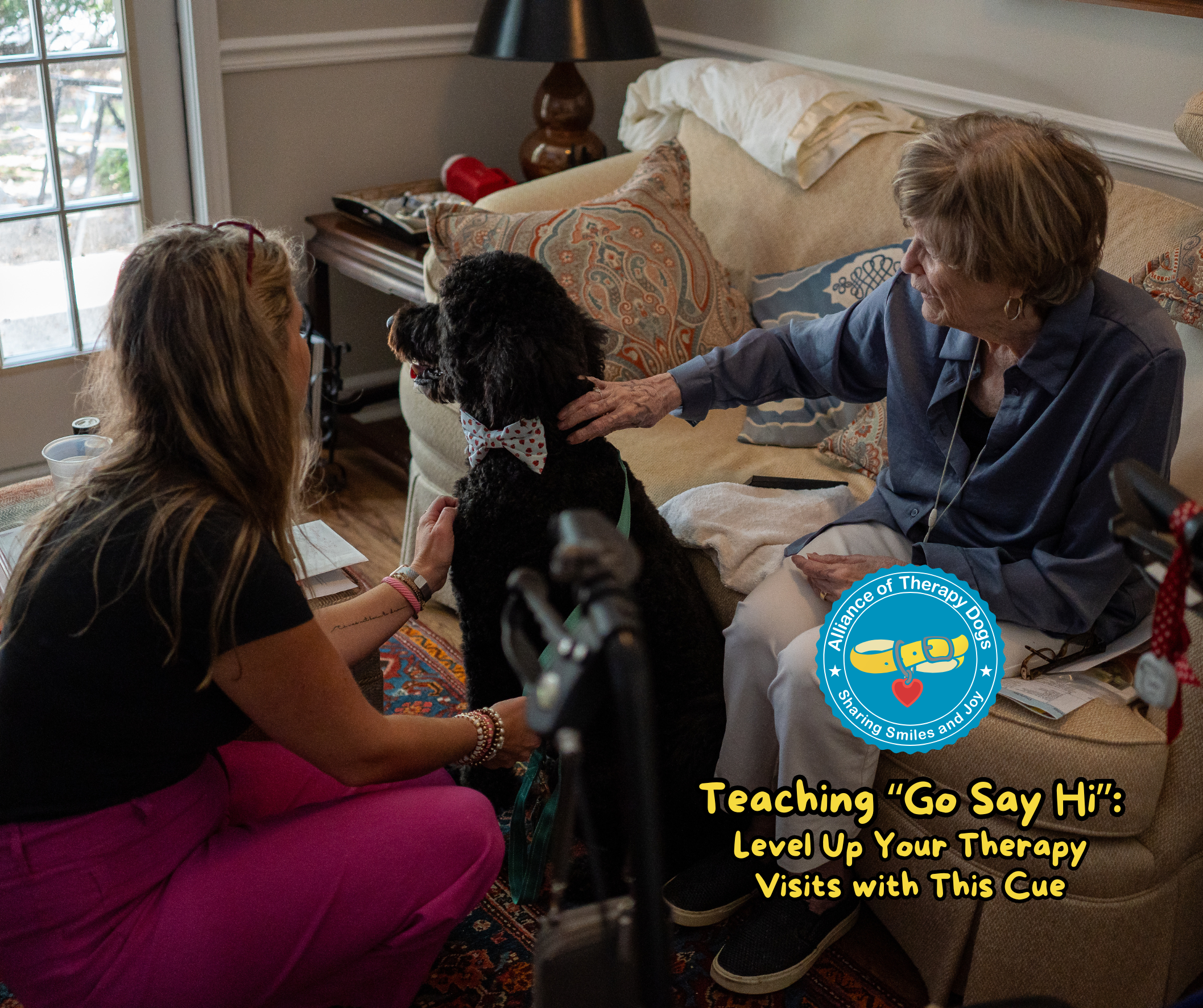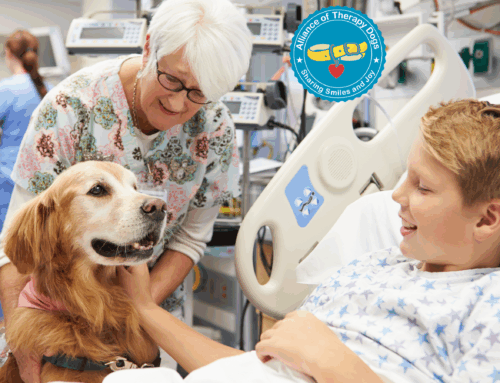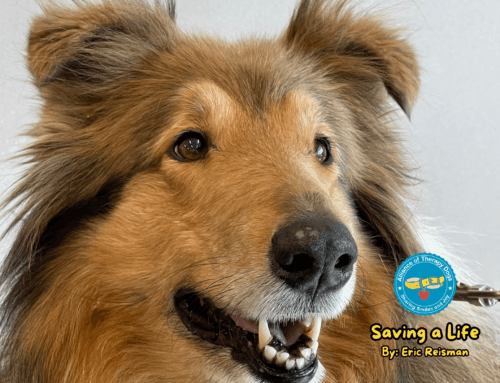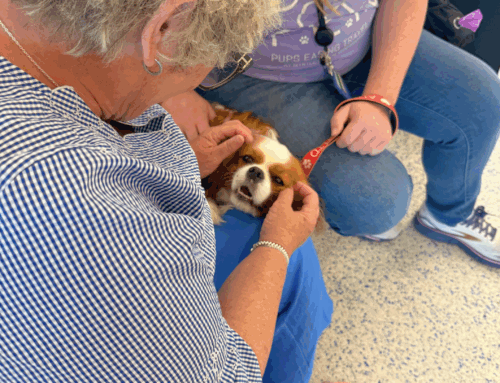If you’ve been visiting with your therapy dog long enough, you’ve probably run into someone who doesn’t want to say hi to your therapy dog. There are a variety of reasons someone may not want to say hello to your dog; they’re in the middle of a task, they don’t want to get covered in dog hair, they’re allergic, they’re afraid, the list goes on. An important part of being a good therapy dog team is controlling your dog until you ask permission to approach someone. This is when a cue like, “Go say hi,” comes in handy. Let’s talk about why this cue is good to have in your repertoire and why it can help you advocate for your dog on a therapy visit.
What does “Go say hi” look like?
The cue, when used correctly, should look like this: You approach someone you want to visit and stop about 6 feet away. Your dog should stand next to you quietly while you greet the person and ask if they would like to visit with a therapy dog. The person responds, “Yes,” and you give your dog the cue, “Go say hi.” Your dog politely moves forward with you into the person’s space to get pet and interact with the person. When you are done, you can both move away together and find someone else to visit.
Why is this an important cue to have?
Using this cue makes it very clear to your dog when they can and cannot visit with someone. This allows you to have more control in your facilities and reduces the number of negative interactions you may have with people. If your dog rushes up to someone before you get a chance to ask if they would like to say hello, you may end up with a complaint because they were allergic, you frightened them, or they got covered in dog hair. This may reduce your chances of visiting the facility in the future. Our teams should be polite and ask permission before approaching anyone.
Advocating For Your Dog
Using a cue like, “Go say hi,” is a great way to check in on your dog. If your dog normally goes to visit a person enthusiastically after getting this cue, you will start to notice when your dog isn’t as excited to visit. This may mean your dog is beginning to get tired and may be a great time to end your visit. Keeping your dog close to you as you exit the facility will help prevent any accidental visits with people.
A “Go say hi” cue may look different for every team, and you may not have formally taught it. Some dogs gradually start to learn how to stay near their handler until they get a cue, either verbally or visually. Your cue might be you stepping forward, sweeping your hand towards a person in front of you, or using a soft guiding hand to help your dog get into a good position for petting. Whether formal or not, it is important that your therapy dog knows how to wait patiently by your side until you are ready to let them visit with someone. This will keep those you visit happy, and more likely to ask you back for another visit.






